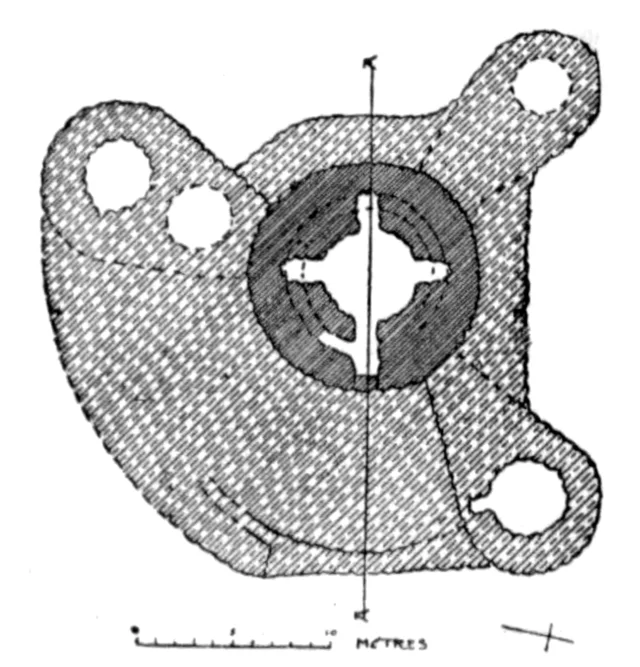Nuraghe Aiga, an important Bronze Age archaeological site in Sardinia, represents a significant example of ancient Nuragic civilization. Located near Abbasanta in the central part of the island, Nuraghe Aiga showcases the unique architectural and cultural practices of the Nuragic people. This structure, like other nuraghi in Sardinia, reflects a society with advanced knowledge of construction, social organization, and possibly ritual practices. Nuraghe Aiga dates back to approximately the 2nd millennium BC, making it over 3,000 years old.
Get your dose of History via Email
Architectural Features of Nuraghe Aiga
Nuraghe Aiga is a single-towered nuraghe, which is common among the earlier forms of nuragic structures. Unlike complex nuraghi, which feature multiple towers connected by walls, single-towered nuraghi represent a simpler architectural form. This type of nuraghe was likely built as a defensive structure, although it may have also served social or religious purposes.
The structure itself is built from large, irregularly shaped basalt stones arranged without mortar. This construction technique, known as dry stone walling, is highly durable. The thick walls and limited entrances suggest a design meant to resist attacks or natural threats.
Function and Significance
The exact function of Nuraghe Aiga remains a subject of scholarly debate. Nuraghi like Aiga are generally believed to have served several roles. They likely acted as defensive structures, community centers, or places of worship. Some researchers suggest that Nuraghe Aiga may have been part of a broader Nuragic network, where each nuraghe held a specific place in the social and defensive organization of the civilization.
Artifacts found around Nuraghe Aiga, such as pottery shards and bronze tools, offer insights into the daily lives of the Nuragic people. These objects show trade and interaction with neighboring regions, including the Mycenaean civilization. Such interactions indicate that Nuraghe Aiga was part of a connected world, with trade routes linking Sardinia to the broader Mediterranean region.
The Nuragic Civilization and Its Legacy
Nuraghe Aiga is part of a broader cultural heritage left by the Nuragic civilization, which thrived in Sardinia from approximately 1800 BC to 238 AD, when the Roman Empire absorbed the island. The Nuragic people are unique for their nuraghi, which are found nowhere else in the world. These structures vary in complexity and size but share the same characteristic dry-stone construction technique.
The Nuragic civilization was one of the few advanced societies in prehistoric Europe, with a social hierarchy, extensive trade networks, and advanced metallurgy. Archaeological evidence suggests that the Nuragic people practiced bronze working and were skilled in crafting weapons, tools, and ornamental objects.
Excavations and Research
Archaeologists have conducted limited excavations at Nuraghe Aiga compared to other major nuraghi on the island. However, the site has still provided valuable information about the Nuragic civilization. Artifacts recovered at Nuraghe Aiga and other sites contribute to our understanding of Sardinian prehistory. Many items, including bronze and ceramic objects, are housed in Sardinia’s museums, where they offer researchers insights into the material culture of the Nuragic people.
Conclusion
Nuraghe Aiga stands as a testament to the architectural and societal achievements of the Nuragic civilization. Its strategic design and construction highlight the Nuragic people’s skills and adaptability. Through ongoing archaeological research, Nuraghe Aiga and similar sites continue to reveal the complexity of this ancient society and its contributions to Mediterranean history. As scholars uncover more about Nuraghe Aiga, we gain a clearer picture of a civilization that played a crucial role in shaping prehistoric Europe.
Source:

